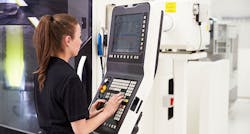Electromechanics—the Future Engineering Major
If I could go back to school and choose a different major, I would choose electromechanical engineering. I do not regret being a mechanical engineer. I love it. Among the options I had in front of me—chemical, electrical, environmental, civil, and mechanical engineering—mechanical was the best choice. However, as the industry has changed and with the integration of newer electronic technology, electromechanical is now the clear winner.
Mechanical engineering, in my opinion, is one of the most diverse engineering majors. Once you have your mechanical engineering degree, you can enter a variety of different professions. Mechanical engineers work in heating and air conditioning (HVAC), aviation, automotive, automation, part design, assembly work, environmental engineering, civil construction, and medical engineering. This is because so many disciplines fall under mechanical engineering (see “What’s the Difference Between Engineering Degrees?”).
Fluid mechanics cover HVAC, aviation, environmental, and even medical devices. Statics and dynamics cover civil construction and part design. Industrial classes like machining, robotics, and computer-aided design apply to world of production and automation. Mechanical engineering opens doors to several industries. Nonetheless, the future lies within the world of electromechanical engineering.
Professor Moderick Greenfield of Eastern Michigan University wrote a paper in 2009 calling for a new type of engineering major. According to Professor Greenfield, “The future proposed bachelor of science in Electromechanical Engineering Technology will provide majors with a strong background in electronics design and mechanical systems. Graduates will be qualified to work in the areas of electronics, instrumentation, and electro-mechanics.”
The future of engineering lies in combining electrical and mechanical engineering into electromechanics. (Courtesy of Thinkstock)
The future industry is one of advanced mechanics. Our most loyal readers know that we are talking more and more about the Internet of Things, sensing technology on end devices, human-machine interfaces on production equipment, collaborative robots alongside human workers, and artificial-intelligence/machine-learning technology in equipment like hydraulic pumps.
According to the University of Pennsylvania, its Bachelor of Science electromechanics program is only one of five schools in the nation that offer combined electrical and mechanical engineering in a baccalaureate degree program. The university states that program is a direct response “to a growing demand from industrial and consulting companies for engineering staff members with a wide range of technical knowledge.” The program offers graduates knowledge and skills to design, operate, and manage electromechanical systems, especially those systems that are automated.
The University of Strathclyde in Scotland promotes that students with an electromechanical engineering degree will work in industries such as energy generation, hybrid petro/electrical vehicles, advanced aircraft design, satellite technology, robotic systems, and sustainable environmental technology. Some of the classes under this degree include:
• Electrical principles
• Heat & flow
• Design & manufacturing
• Digital electronic systems
• Instrumentation & microcontrollers
• Flight & spaceflight
• Alternative energy sources
• Computer-aided engineering design
Electromechanics does not just seem like the best step forward, but rather the most logical step forward. As electronic equipment and devices become more and more integrated into our daily lives, it only makes sense that mechanical engineers learn how to program these electrical devices. The vice versa is also true. Electrical engineers will start designing equipment for mechanical engineers to use. They need to know how design properly for those users. The degree of electromechanics benefits both sides.


